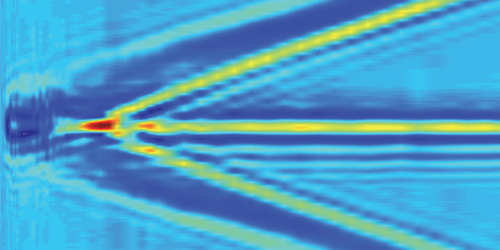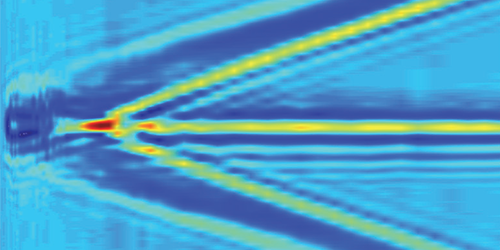Gyroscopic Molecules
Specially tailored laser pulses can spin gas molecules into a “superrotor” state, but how exactly this rotational energy dissipates is unclear. New experiments track the behavior of these fast-rotating molecules, demonstrating a short-lived “gyroscopic” stage, in which the molecules spin in the same direction despite collisions with each other. The molecular alignment gives the gas unique optical properties that might be useful in optical switches.
Researchers have developed several laser techniques for rapidly twirling the molecules in a gas. The molecules initially rotate in unison, but collisions quickly disrupt this coherence, and eventually the rotational energy is dissipated into thermal energy. This localized heating has applications, for example, in generating short-lived optical waveguides in air. Theoretical models predict that the gas molecules may continue spinning in the same direction for a short time before thermalization occurs, but so far, experiments have not been able to confirm this hypothesis.
Valery Milner and his colleagues at the University of British Columbia in Canada studied the dynamics of fast-rotating oxygen molecules inside a gas cell. To induce rotation, the team used an optical centrifuge—a laser pulse that has a linear polarization rotating around the propagation axis. Molecules in the pulse’s path are spun up to a rotation rate of 10 terahertz (10 trillion turns per second). These superrotors form a narrow channel, which the team filmed using phase-contrast imaging. At early times, the channel exhibited polarization-dependent light propagation—implying that the molecules were still aligned in spite of collisional effects. The short duration (7 nanoseconds) of this gyroscopic stage might prove useful as a fast way to switch the polarization of light in an optical device.
This research is published in Physical Review X
–Michael Schirber





